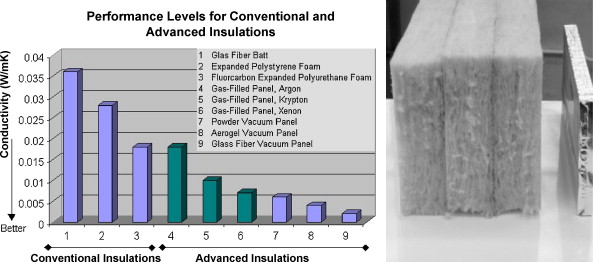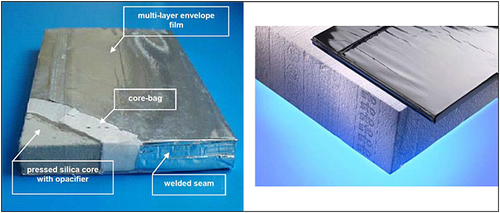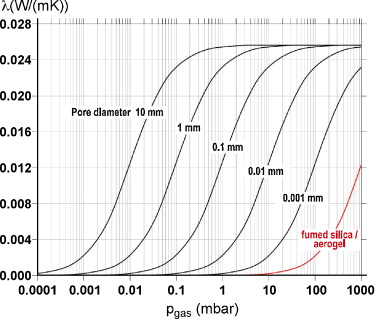Image 6: Thermal conductivity vs. pressure of
air for materials with different pore sizes (Baetens et al. 2009).
The main appealing aspect of VIPs are their high thermal
performance, which is often several times higher than a
conventional insulator of a similar thickness. This means that
VIPs can be used in places where not much space is available.

Image 7: on the left is a comparison of the conductivity of
some insulators, on the right is a VIP (in foil) compared to
the thickness
of glass wool needed for an equivalent thermal conductivity
(Baetens et al. 2009).
However, VIPs have several disadvantages compared to more
conventional insulators. One is the fragility of the panels. If
a panel is punctured, it will lose its low pressure environment,
and since VIPs are generally made much thinner than other
insulators, a punctured VIP will become a very poor insulator.
Because the seal on a VIP needs to be maintained, they must be
very carefully installed and once they are manufactured, as they
can't be modified without damaging the foil seal. Another
disadvantage of VIPs are their service life. Over time, VIP's
thermal conductivity will increase as a result of gas
penetration and water vapor penetration. While the service life
of a VIP depends on what type of core is used, a service life of
about 60 years is expected for a fumed silica core with a
multilayered aluminum envelope, and a service life of 10-15
years for an areogel with a metal foil envelope (Alotaibi,
Riffat 2013). This compares to other insulators like mineral
wool and fiberglass, which both have a service life of about 100
years. The last disadvantage of VIPs are their higher price
compared to other conventional insulation.



